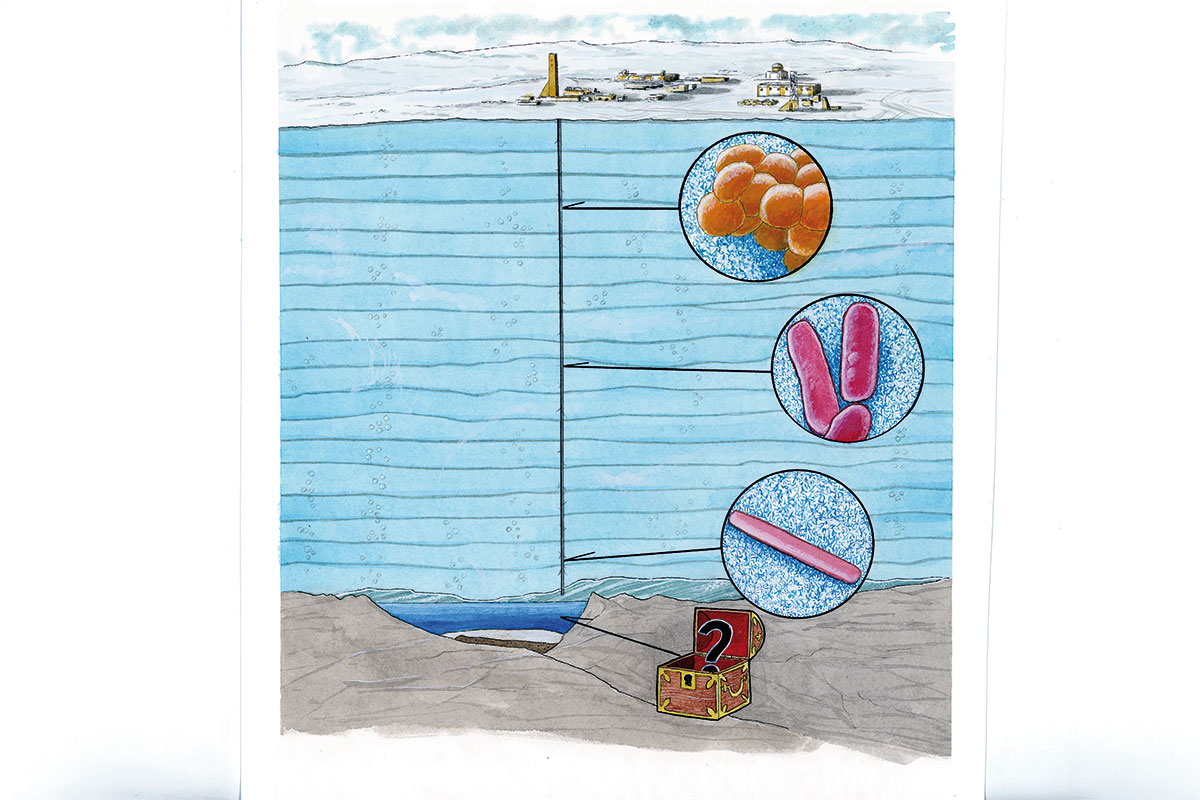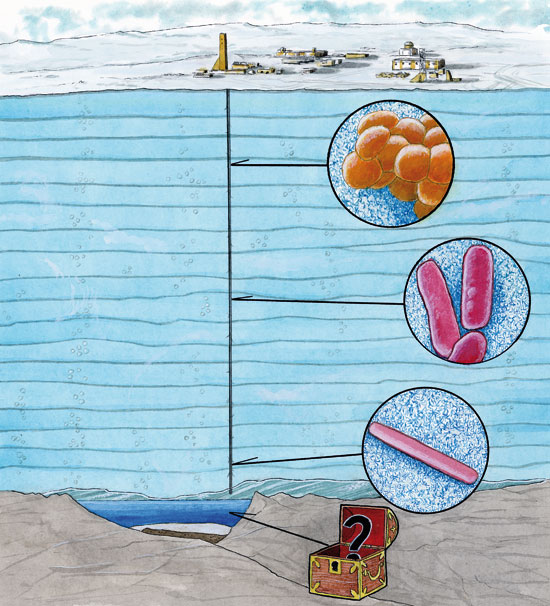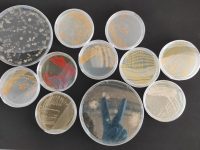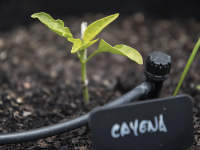
At the centre of Antarctica, under Russian Vostok Station (Vostok being Russian for East), and very close to the South Pole, there is an enormous, elongated lake of around 14,000 square kilometres (30% more than the province of Valencia). But it cannot be seen; it is hidden under a compact layer of almost 4 kilometres of ice. Water under the lake has remained isolated from the atmosphere for more than 15 million years; it is, thus, an ecosystem of unique features. What kind of microbes can live in a lake so deep that it cannot be reached by light? Did organisms trapped when the lake was covered by ice survive? Will there be as many bacteria and viruses as we can find in lakes and oceans? What will happen when we can drill through those 4 kilometres of ice? Will water spray out? Will we contaminate the water with surface microbes?
Scientists have been asking these and similar questions for years. Russians because the lake is in «their» region of the Antarctic Continent, and because they are the only ones who have worked there. North Americans, who have been unable to work there up to now, because they question the results if adequate controls are not set. Ecologists because they fear, not without cause, that the ecosystem will be destroyed when it comes into contact with the outside world.
«Water in Lake Vostok has remained isolated from the atmosphere for more than 15 million years. What kind of microbes can live in a lake so deep that it cannot be reached by light?»
Lake Vostok was discovered in 1974 using radar. Now it is clearly «visible» through artificial satellites. Water is kept in its liquid form as a result of the pressure from the great ice mass on top of it. While water stays liquid (essential requirement for active life), ambient conditions are rigorous: an average hydrostatic pressure of 400 bar, an estimated temperature of -3 °C (water is not frozen due to existing pressure and possible geothermic activity) and complete darkness. The study of the lake may serve as a guide of the conditions in Europa (Jupiter’s satellite) and Enceladus (Saturn’s satellite), both of which have an extensive ice crust and possibly liquid water under it, in a manner much like Lake Vostok’s.
We can distinguish three main zones in this ice layer: (1) a 3,310 metres deep top layer, which is a paleoclimate «clock» of the Earth for the last 420,000 years (it covers all four glaciations of the late Quaternary); (2) the layer stretching from 3,310 to 3,539 metres (transition ice), which displays deformations as a consequence of slide of some layers over others; and (3) the layer under 3,539 metres, about 200 metres wide (dynamic accretion zone), where there is a balance between melting and freezing, between the «surface» of the lake and the ice layer above.

Under Russian Vostok Station (78 oS 106 oE), and very close to the South Pole, there is a lake of around 14,000 square kilometres. It is hidden under almost four kilometres of ice. Water in the lake has been isolated from the atmosphere for over 15 million years.What bacteria and viruses can live there? Did organisms trapped so many million years ago survive? We do not know now, but we will soon enough. / Carles Puche
Attracted by the possibility of studying the purest water in the planet, Russian researchers have drilled the ice to take samples (batons or ice cylinders –the same way geological surveys extract batons from rocks). But in 1998, upon reaching 3,623 metres deep, they stopped because of the risk of lake contamination. Ten years ago, perforations were resumed and in 2007 they reached a point 80 metres above the lake. In February 2012 perforation reached the lake and some samples were extracted, but it was not clear that the extracted frozen water was from the lake and not the ice layers over it. In the next campaign, in polar midsummer (January 2013), another sample baton was extracted from a lower point to make sure that it was from water of the lake.
Samples of different kinds of microorganisms can be found in Lake Vostok. They remain active but do not multiply or they do it a very slow pace. The low temperatures do not represent an obstacle to microbial colonisation and survival in this kind of environment. Microorganism capability to survive and grow in a very cold environment is the result of molecular and physiological adaptive features.
Microorganisms adapted to cold are called psychrophils. The freezing point depends on pressure and water salinity. Fresh water freezes at approximately 0 °C. Sea water freezes at about -1.8 °C, because of its 35‰ salinity (that is, 35 grams of salts for each litre of sea water). When water freezes, salts are separated from the ice crystal and form a matrix in the pores and cracks around ice crystals. Microorganisms found in the polar ice show adaptations not only to cold, but also to high concentrations of salts. In a 3,607 metres deep sample, molecular detection showed a thermophilic bacteria (!), Hydrogenophilus thermoluteolus, similar to those found in Yellowstone’s thermal springs. This result may confirm the existence of geothermic activity in Lake Vostok.
On March 6th 2013, RIA Novosti (the Russian international news agency) made public that the first analyses of the samples extracted in January 2013 organisms were detected that are different to any other life form on Earth. The news quote Sergei Bulat, researcher in the Saint Petersburg’s Institute of Nuclear Physics, and say that they are bacteria «which do not pertain to any of the more than 40 known phyla» (actually, 55 phyla are already known). Other researchers argue that the announcement was premature because there could exist contamination from the liquid of the perforation. On the other hand, we have to point out that 90% of the present bacteria on Earth are still not cultured and their genome is unknown. So the gene sequences of a new bacteria not coinciding with already described sequences should not come as a surprise.
Thus, in Lake Vostok, ¿will we find life forms as nothing seen before, or will it only be a dark and very cold fresh water spot? To answer we will have to wait. As Descartes (who really knew about a lot of things) said, «I would give everything I know for half of what I ignore».





